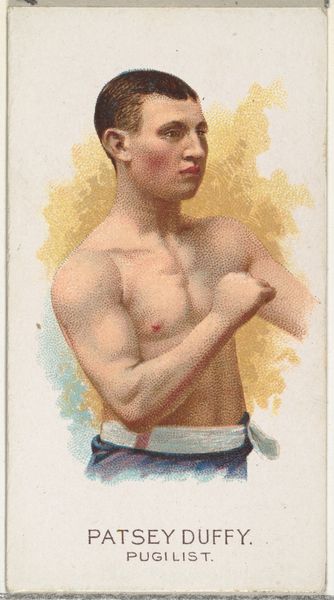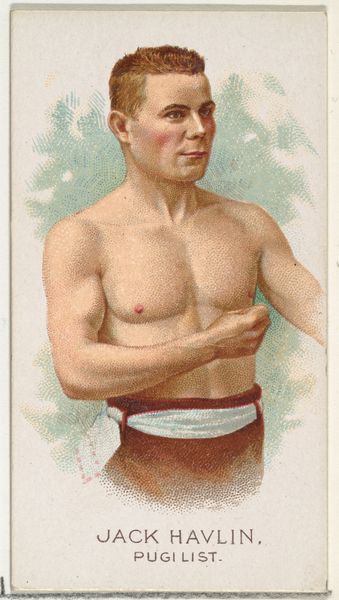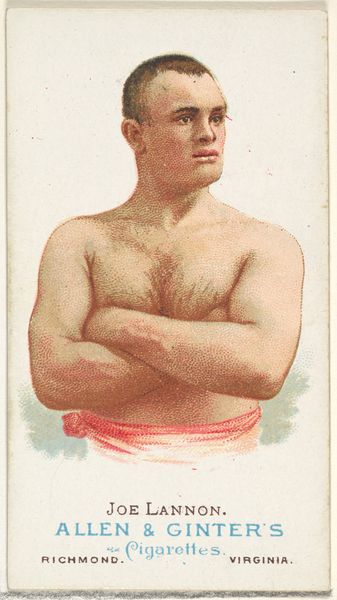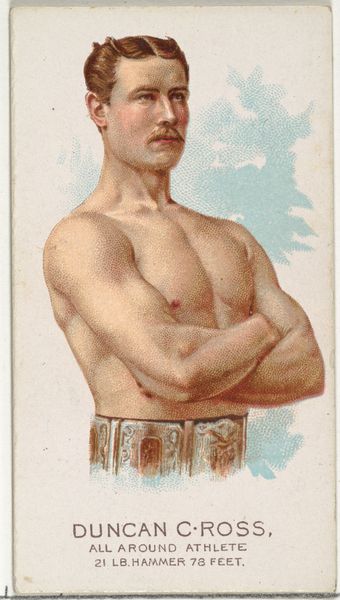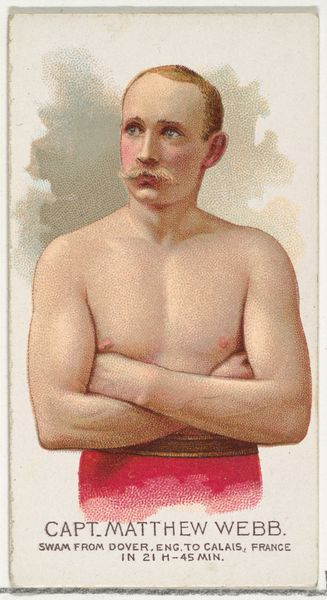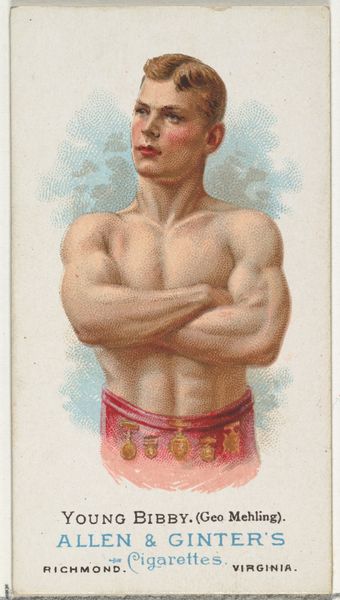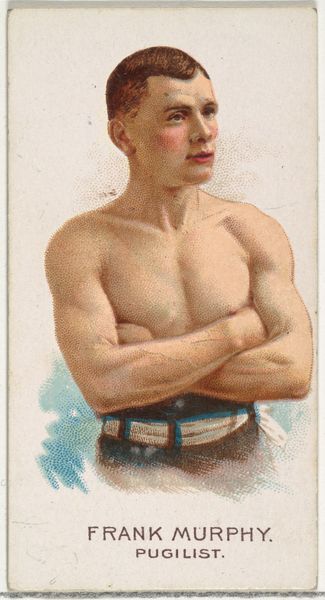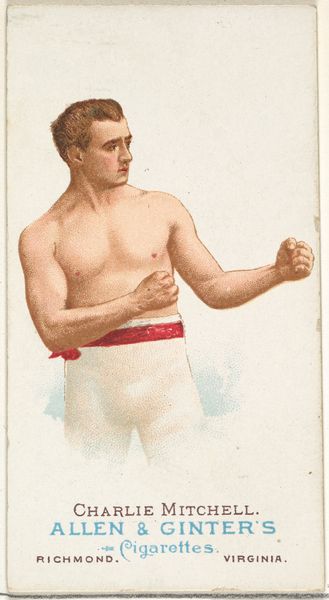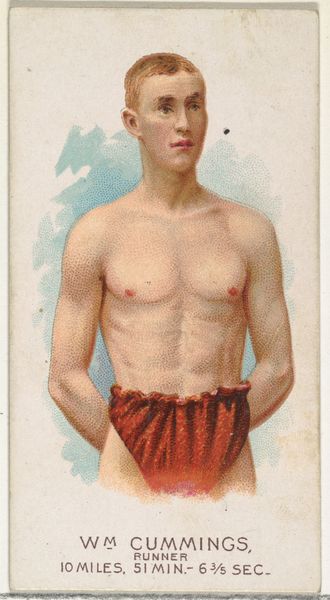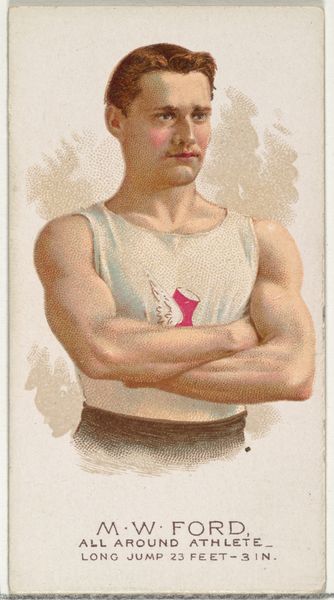
Johnny Murphy, Pugilist, from World's Champions, Series 2 (N29) for Allen & Ginter Cigarettes 1888
0:00
0:00
drawing, print
#
portrait
#
drawing
#
portrait image
# print
#
caricature
#
portrait reference
#
portrait head and shoulder
#
framed image
#
animal portrait
#
men
#
animal drawing portrait
#
portrait drawing
#
portrait art
#
fine art portrait
Dimensions: Sheet: 2 3/4 x 1 1/2 in. (7 x 3.8 cm)
Copyright: Public Domain
Curator: What catches my eye immediately about this portrait is the figure's somewhat apprehensive stance. It's more poised than pugnacious. Editor: I agree. Allen and Ginter produced this print of Johnny Murphy, Pugilist, as part of their World's Champion series in 1888. What might appear like a simple sports card opens a whole conversation around the commodification of athletes and the early days of celebrity culture. Curator: The word "Champion" resonates with me, but is tempered by the more subtle iconography on display. The redness of the sash, combined with his clasped hands near his chest. It reads almost like a religious painting, some kind of suffering martyr perhaps? Editor: An interesting take. Though it must be considered within the context of the series itself. Each card celebrated figures admired for their physical skill, a time when ideas about masculinity were very much connected to strength and athletic prowess. Consider, though, who *didn't* get such cards? Curator: Absolutely, a crucial intervention. Who gets immortalized, and why, remains key. What symbols of power are conferred through visual representation? Who controls the image-making machinery and what societal values are amplified through targeted portraiture? The absence of those underrepresented or marginalized due to gender or race, speaks volumes. Editor: Precisely! And consider the cigarette cards themselves. They weren't exactly high art. Meant to be collected and traded, or discarded. They're a curious way to immortalize someone, yet the sheer number made says a great deal about contemporary consumer culture at the time. The ubiquity of such portraits surely left a big impact. Curator: It adds to our understanding of the cultural meanings inscribed in material objects. Each print acting as a site where ideology and power converged. What does it tell us that images of powerful people became so easily traded? Editor: By interrogating what is so readily available we expose a historical narrative about both power and popular culture. We’ve looked deeper at how identity and commodity culture come together.
Comments
No comments
Be the first to comment and join the conversation on the ultimate creative platform.
